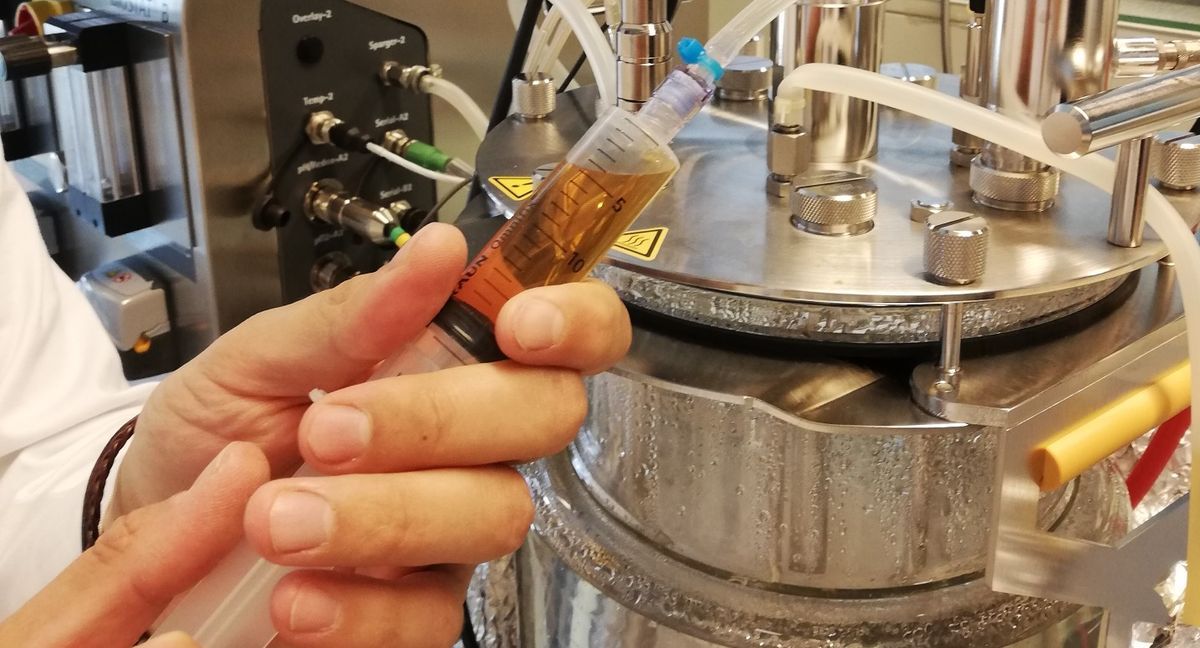How Paleo is using biochemistry to bring plant-based mammoth meat to consumers

The European startup uses precision fermentation to create heme commonly found in beef, chicken, pork, lamb and tuna — in addition to the long-extinct mammal — to make analogs taste more authentic.
Meat alternative makers are working to create products that look, feel, taste and smell like the products consumers are already familiar with.
Belgian startup Paleo is developing an ingredient that will create an entirely new taste sensation: plant-based wooly mammoth.
The company creates different animal heme proteins through precision fermentation. Heme, an iron-rich protein found in the muscles of animals, is a substance that helps provide meat with its trademark taste. Paleo can use fermentation to make heme that is normally found in beef, chicken, pork, lamb, tuna and, yes, wooly mammoth.
“You can describe it as being more meaty,” said Co-founder and CEO Hermes Sanctorum. Mammoth heme has a stronger aroma and taste, he said — though it usually depends on the ingredients it’s being used with, as well as its application.
But Paleo isn’t just out there to resurrect tastes from the ancient past and add them to tomorrow’s soy and pea analogs. Its heme proteins can also customize alternative versions of the food many meat-loving consumers enjoy today, making them more likely to make sustainable and kinder choices, Sanctorum said.
Sanctorum acknowledges he is impatient. A bioengineer and former member of Belgium’s Federal Parliament, he left politics because it took too long for things to get done. He said he is a firm believer in the power of cultivated meat, but it will still take years to get to the scale in which it can make a difference in what people eat. Plant-based food is here and available, but making the products taste like something consumers would want is a challenge, Sanctorum said.
“Since heme is such an important part of taste in meat, if you want to make plant-based foods taste more like meat, it makes sense to add heme to it,” Sanctorum said.
Because Paleo uses precision fermentation, its heme ingredients are identical to what’s found in the corresponding animals. (Or, in the case of wooly mammoth, what would be found.) Its patent application was recently published by the World Intellectual Property Organization. Sanctorum said the company is currently talking with some food manufacturers, and its ingredient could be on the market as soon as next year.
Heme without animalsHeme protein plays two vital roles in meat, Sanctorum said. It provides the characteristic meaty taste that consumers are used to. But it also makes iron bio-available. Both of those aspects are vital for meat analogs, he said.
“It's taste, which is very important for a consumer preference, but it's also about health, nutritional value, so it's a good and healthy protein,” Sanctorum said.
A small amount of heme protein can make a great impact on a plant-based product’s taste and nutrition, he said.
Paleo, which Sanctorum founded with medical doctor Andy de Jong, uses precision fermentation technology to create this protein without any animal. It modifies yeasts to produce these specific heme proteins when fermented. And, Sanctorum said, this method gets around Europe’s strict restrictions around genetically modified food — though whether it would be considered a GMO product by consumers or other groups is an open question.
There are already alternative heme ingredients out there. Impossible Foods has one for its products that comes from soy and is made through precision fermentation, and Motif FoodWorks launched its Hemami ingredient late last year. But Paleo is the only company with a portfolio of different heme choices, Sanctorum said.
Sanctorum said it was important to come out with several heme protein options because customers will be making different products and have different needs. The proteins are generally similar from animal to animal, but Sanctorum said that there are differences in things like amino acid composition or compounds. The work of designing the heme proteins is done through biochemistry, he said, and Paleo is working with potential clients to see how closely the proteins can meet different needs.
Yum, mammothThe company’s biochemistry-based portfolio building is how they got to creating wooly mammoth heme, Sanctorum said.
“It started as a challenge,” Sanctorum said. “We thought, if you can do all the obvious species, could we do it for an ancient protein that has been consumed a long time by humanity, but not any more, right? I mean, it's about 12,000 years ago.”
Paleo partnered with paleozoic researchers to see what they could learn about wooly mammoth DNA, which has been preserved in part. It was a real puzzle, Sanctorum said, but they were able to figure it out through using science to figure out some of the missing pieces.
As they worked more on mammoth heme, Sanctorum said they found that the protein was more stable than those found in other animals. When the mammoth heme was cooked, it released more aromatic compounds than other ingredients.
The mammoth heme is more than a demonstration of Paleo’s tech knowhow, Sanctorum said. It’s also not just something wacky that the company can offer.
“I know that it's a bit more exotic,” he said. “I can imagine that not everyone is really into trying something like that. But at least we can show also that we are able to produce something less obvious. Because I can imagine that we sit together with a large potential client and they say, ‘Yeah, but in fact, we need something that is slightly different.’ Well, we are able to anticipate on that, and we just make the protein that they need.”
Scaling upPaleo is working on its growth and moving toward creating enough ingredients to sell. The company has a partnership with the Bio Base Europe Pilot Plant — an independent fermentation lab in Belgium that helps with product development — as it is scaling up, Sanctorum said.
The scale-up process should be complete next year, Sanctorum said, but getting the ingredient to market is another story. Because Paleo is Europe-based, it designed its products to get around the EU’s provisions dealing with GMO food, but the ingredients still need regulatory approval. Sanctorum said Paleo is working with regulators in Europe, as well as the U.S., Latin America and Asia.
The company’s first launch, Sanctorum said, will depend on several things coming together. It will be in a country that grants regulatory approval, and with a manufacturer known for its innovation that is ready to use Paleo’s heme in a product intended to truly do something different. Sanctorum said his team is talking to about 10 companies who are candidates for a first launch.
Paleo is also working on fundraising. Late last year, the company closed a 2 million euro ($2.26 million) seed round. Those funds were used on R&D and designing future facilities, including its own pilot plant. Sanctorum said Paleo is working on finding investors for its next funding round, which it hopes to close this fall.
)
)
)



)
)
)
)
)
)
)
)
)
)
)
)
)
)
)
)
)
)
)
)
)
)
)
)
)
)
)
)
)
)
)
)
)
)
)
)
)
)
)